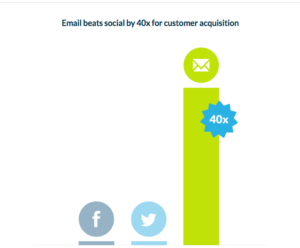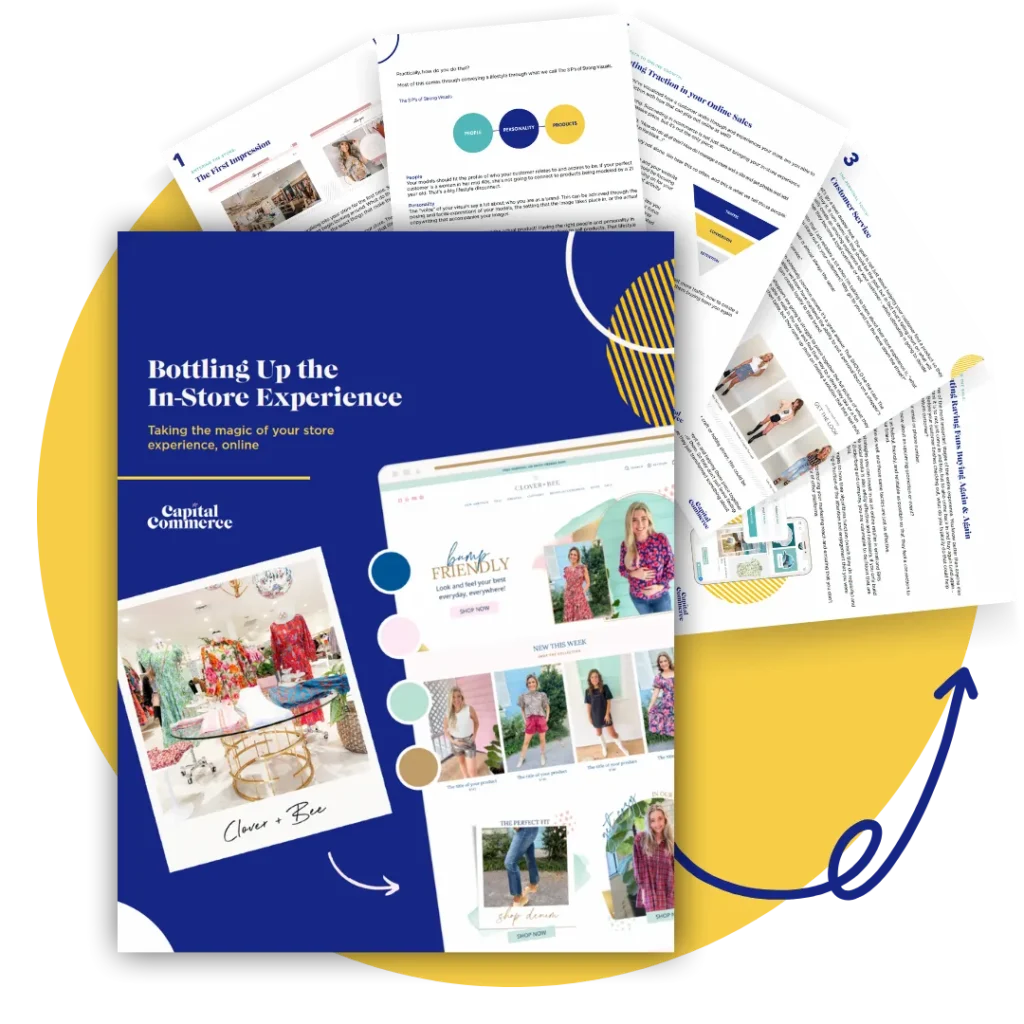This is part 2 of our series, “You’ve Launched, Now What?”, which covers the strategies that merchants should consider after launching (or re-launching) their online store to begin building sales momentum for that channel.
98% of your site’s visitors leave without buying anything.
Yes, 98% is high – and that might be surprising to you. That’s just the reality of online retail. The biggest ecommerce sites in the world are thrilled to see 2-4% conversion rates.
What can you do to survive that figure?
• You could invest in social media to reach new customers where they are
• You could invest in re-marketing with pay-per-click ads
Those are both great ideas, but what else could you do? How else can you win over new business or get your customers to buy again?
Email automation actually brings one of the highest returns for businesses.
For every $1 spent, email marketing generates $38 in ROI.

In a report by McKinsey, it was shown that email is 40 times more effective at acquiring new customers than Facebook or Twitter.
You may already be using email marketing and are scratching your head because you are nowhere near seeing results like that.
In my experience in working with ecommerce stores, the ones who see those big returns from email are the ones who are using automation to send segmented emails based on a customer’s behavior. They are able to continually measure and optimize the success of those campaigns and grow the conversion rates over time.
With email automation, you will be sending emails automatically, at just the right time, based on important triggers like what they buy (or don’t buy) or how long it has been since the last time they bought anything.
You’ll also be able to analyze the performance of your automation flows so that you can continually increase their effectiveness.
Ecommerce stores everywhere are becoming increasingly convinced of the power email automation
To date, there are nearly 11 times more companies with marketing automation today than there were in early 2011.
– The Drum
And it’s not becoming a lesser priority anytime soon – the exact opposite, in fact…
Out of over 3000 businesses surveyed, 74% of respondents said they were planning on spending more money on email in 2017.
How to get started with Email Automation for your store
One of the quickest, low-hanging fruits that you can set up is what is called an Abandoned Cart Flow. This is an email (or series of emails) sent to a customer who adds a product to their cart and then leaves without purchasing.
These emails aim at getting those products – that the customer was interested enough in to add them to their cart – back in front of them before their interest or need for the product wears off.
These automation campaigns have a huge effect on conversions for eCommerce stores.

Timely messages like this to an otherwise lost customer, plays a major role in the automation strategy, and are one of the best conversion-boosting tools in ecommerce today. The best part is that you write the emails once and then let them go to work for you automatically.
Depending on what ecommerce platform you are on, creating abandoned cart flows may be as easy as turning on a feature in your admin (good news if you’re on BigCommerce or Shopify). For some, you may need to rely on an email service provider that supports marketing automation, like Klaviyo or MailChimp.
How to Build an Abandoned Cart Campaign Like a Pro
When using this strategy, it is imperative that you send multiple emails. I would recommend a minimum of one a day, for three days.
The reason for this is because studies have found that customers are 2.4 times more likely to complete the purchase than the people who receive only one follow up email.
In our experience working with clients to implement these sequences, the abandoned cart has proven itself to be one of the most successful automation campaigns that an ecommerce business can use.
Let’s look at a template of what we typically like to see for the sequence:
Email #1: Four hours after abandoning cart
The purpose of this email is to get them back in front of the products before the luster wears off that made them add those items to their cart in the first place. It’s important here to create a sense of urgency and close the sale.
- Use terms like “temporarily reserved”, “low on stock”, “we’ll hold it for you for a limited time”, etc. to create that urgency
- Use one, giant call to action: Return to cart. Anything else is a distraction.
- Make sure to include product photos of the items that are in their cart. You’re dealing with very visual people.
Email #2: 24 hours after abandoning cart
This email will be pretty similar to the first email. You’re still wanting to build up that urgency and close the sale. If you kicked things off by saying that you had reserved the stock for their order, be sure to mention that they have a limited time to complete their order before you release the items back to the public.
While this may not be entirely true to your workflow, most retail businesses do have limited stock, so this is not far-fetched to treat an abandoned cart this way. It’s just good customer service.
Email #3: 48 hours after abandoning cart
Now is the time to make an offer to non-buyers. If they still have not completed their checkout, use this email as a way to offer them a small discount using the special link you are providing in this email.
Typically, something like 10-20% off the order, free shipping, or a free sample/gift thrown in will be enough to push people off the fence.
Final thoughts
Again, creating an abandoned cart sequence like this can be done in just one afternoon, and it will generate thousands of dollars for your business over it’s lifetime with little to no maintenance on your part.
That’s a huge win.
If what’s standing in your way from claiming that otherwise lost revenue for your business is your own time and limitations, then it’s time to move past that.
We are happy to help you get this strategy into place for your store. Get in touch today and we can talk about next steps.




